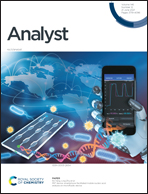3D printed imaging platform for portable cell counting†
Abstract
Despite having widespread application in the biomedical sciences, flow cytometers have several limitations that prevent their application to point-of-care (POC) diagnostics in resource-limited environments. 3D printing provides a cost-effective approach to improve the accessibility of POC devices in resource-limited environments. Towards this goal, we introduce a 3D-printed imaging platform (3DPIP) capable of accurately counting particles and perform fluorescence microscopy. In our 3DPIP, captured microscopic images of particle flow are processed on a custom developed particle counter code to provide a particle count. This prototype uses a machine vision-based algorithm to identify particles from captured flow images and is flexible enough to allow for labeled and label-free particle counting. Additionally, the particle counter code returns particle coordinates with respect to time which can further be used to perform particle image velocimetry. These results can help estimate forces acting on particles, and identify and sort different types of cells/particles. We evaluated the performance of this prototype by counting 10 μm polystyrene particles diluted in deionized water at different concentrations and comparing the results with a commercial Beckman-Coulter Z2 particle counter. The 3DPIP can count particle concentrations down to ∼100 particles per mL with a standard deviation of ±20 particles, which is comparable to the results obtained on a commercial particle counter. Our platform produces accurate results at flow rates up to 9 mL h−1 for concentrations below 1000 particle per mL, while 5 mL h−1 produces accurate results above this concentration limit. Aside from performing flow-through experiments, our instrument is capable of performing static experiments that are comparable to a plate reader. In this configuration, our instrument is able to count between 10 and 250 cells per image, depending on the prepared concentration of bacteria samples (Citrobacter freundii; ATCC 8090). Overall, this platform represents a first step towards the development of an affordable fully 3D printable imaging flow cytometry instrument for use in resource-limited clinical environments.



 Please wait while we load your content...
Please wait while we load your content...